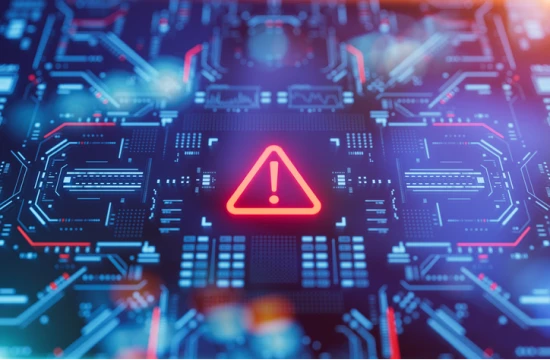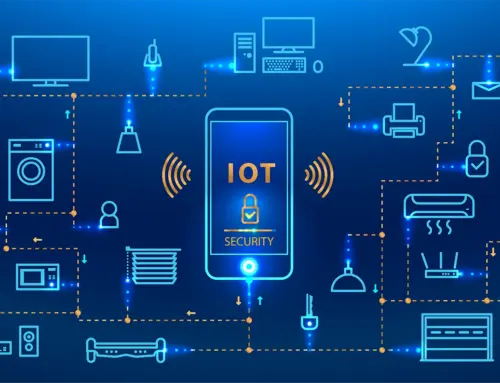
Understanding Ransomware: Prevention and Response
Ransomware Attack: Understanding Ransomware Prevention and Response Guide
In today’s digital landscape, the threat of a ransomware attack looms large, posing a significant risk to organizations of all sizes and indicating a ransomware attack could happen at any time. Understanding ransomware is the first crucial step in bolstering your defenses and ensuring business continuity. This guide serves as a comprehensive resource, providing insights into ransomware prevention and response strategies. It is vital to recognize the different facets of this cyber threat to effectively safeguard your enterprise.
Understanding Ransomware
Understanding ransomware is paramount for any organization striving to maintain a robust security posture. Ransomware is a type of malicious software, a cyber threat that can cripple operations by encrypting critical data and demanding a ransom for its release. It is imperative to understand how ransomware works, the different types of ransomware, and the methods attackers use to deploy these malicious payloads. By gaining a deep understanding of ransomware, organizations can better prepare and implement effective prevention strategies and incident response plans.
What is Ransomware?
Ransomware is a specific type of malware that restricts access to a computer system or network, demanding a ransom payment from the victim to restore access. It operates by encrypting files, databases, and systems, rendering them unusable until a decryption key is provided by the attacker. A ransomware attack can have devastating consequences, leading to significant financial losses, reputational damage, and operational disruptions. Ransomware threats are constantly evolving, with new ransomware variants and ransomware strains emerging regularly, making proactive ransomware prevention and ransomware protection essential.
How Ransomware Works
Understanding how ransomware works is essential for effective ransomware defense. Typically, a ransomware infection begins with an attacker gaining initial access through vulnerabilities or social engineering tactics, such as phishing emails. Once inside the network, the ransomware encrypts data using a sophisticated algorithm. The attacker then demands a ransom, often in cryptocurrency, in exchange for the decryption key. The victim faces a difficult decision: pay the ransom and hope for the key, or attempt to restore data from backups, an incident response process which is crucial for data recovery without incentivizing cyber criminals. Preventing ransomware attacks requires a multi-layered approach, including robust security measures and employee awareness training.
Types of Ransomware
Various types of ransomware exist, each with unique characteristics and attack vectors. Some common ransomware variants include CryptoLocker, WannaCry, and Ryuk. Some types of ransomware, such as wiper ransomware, may not even provide a decryption key after payment, aiming solely to destroy data. Understanding the nuances of each type of ransomware enables security teams to tailor their ransomware detection and response capabilities. Effective ransomware prevention strategies must consider the diverse range of ransomware strains and their potential impact of ransomware. Proactive threat detection and response, coupled with regular security patches, are critical defense strategies.
Impact of Ransomware
Financial Consequences
The financial consequences of a successful ransomware attack can be staggering, encompassing not only the ransom demand itself but also the associated costs of system downtime, data recovery, and legal ramifications. When a ransomware infection takes hold, organizations may face significant operational disruptions, leading to lost revenue and productivity. The decision to pay the ransom is a complex one, as there is no guarantee that ransomware actors will provide a functional decryption key. Moreover, paying the ransom can incentivize further cyber threat activity and attract the attention of other ransomware groups. Investing in robust ransomware prevention measures and maintaining a comprehensive incident response plan is crucial to mitigate potential financial losses.
Operational Disruptions
Operational disruptions are a frequent and severe outcome of a ransomware attack, crippling an organization’s ability to function effectively. When systems are encrypted by malicious software, core business processes grind to a halt, impacting productivity and potentially halting services to customers. The incident response process required to restore operations can be lengthy and complex, involving data recovery from backup systems and thorough security patches to prevent future attacks. Effective ransomware prevention and preparedness are essential to minimize these disruptions and maintain business continuity. Awareness training can also enable employee to quickly identify a phishing email, preventing the ransomware infection in the first place.
Reputational Damage
Beyond the immediate financial and operational impacts of ransomware incidents, organizations face the significant threat of reputational damage. A ransomware attack can erode customer trust and confidence, especially if sensitive data is compromised. News of a security breach can quickly spread, leading to negative media coverage and long-term damage to brand image. Proactive threat detection and response, coupled with transparent communication, are crucial for mitigating the reputational fallout from a ransomware attack. Implementing robust security measures and demonstrating a commitment to ransomware protection can help rebuild trust and maintain a positive security posture following an incident. Companies need to be able to prevent attacks to avoid reputational damage and the spread of ransomware.
Ransomware Prevention Strategies
Best Practices for Ransomware Protection
Implementing best practices for ransomware protection is crucial in today’s threat landscape. These prevention strategies should encompass multiple layers of security measures, including:
- A robust firewall and intrusion detection systems.
- Regular security patches for all operating systems and applications to address known vulnerabilities that attackers can exploit.
- Email security solutions to filter out phishing emails, a common vector for ransomware infections.
In addition, organizations must implement strong access controls and the principle of least privilege to limit the potential impact of ransomware. Proactive monitoring and threat detection and response systems are also critical for identifying and neutralizing malicious activity before it can cause damage. These security solutions will bolster your security posture.
Backup Solutions
Reliable backup solutions are a cornerstone of any effective ransomware defense strategy. Regular and automated backups of critical data, stored offsite or in a secure cloud environment, ensure that organizations can recover from a ransomware attack without having to pay the ransom. Key features of effective backup solutions include:
- Versioning capabilities, allowing for the restoration of files to a point in time before the encryption occurred.
- Regular testing of the backup and recovery process to ensure its effectiveness in a real-world scenario.
A well-designed backup strategy can significantly reduce the financial consequences and operational disruptions associated with ransomware incidents. This forms a vital part of your incident response plan.
Awareness Training for Employees
Awareness training for employees is a vital component of comprehensive ransomware prevention. Employees are often the first line of ransomware defense, and their ability to recognize and avoid phishing attempts can significantly reduce the risk of a successful ransomware attack. Awareness training should cover topics such as identifying suspicious emails, avoiding clicking on unknown links, and the importance of strong passwords. Simulated phishing exercises can help reinforce training and identify areas where employees may need additional education. By empowering employees with the knowledge and skills to identify and report potential cyber threats, organizations can significantly strengthen their overall security posture and prevent attacks. This approach is proactive in nature, aiming to prevent ransomware proactively by focusing on the human element and improving overall security awareness. This also helps to cover any Identifying security gaps is crucial in creating a robust defense against ransomware. that technological measures may miss.
Preventing Ransomware Attacks
Proactive Measures
Implementing proactive measures is paramount to prevent ransomware attacks. Proactive threat management involves vigilant monitoring of network traffic, system logs, and user activity to identify anomalous patterns that may indicate a ransomware attack. cyber threat. This approach also includes the deployment of advanced security solutions such as intrusion detection systems, which play a vital role in the defense against ransomware. detection and prevention systems, as well as advanced endpoint detection and response tools. By preventing ransomware through proactive monitoring, organizations can minimize the window of opportunity for attackers and reduce the potential impact of ransomware. Our security team at TeamWin Global Technologica recognizes the importance of proactive strategies, safeguarding Your Enterprise and Ensuring Tomorrow’s Success. Anticipate and mitigate cyber risks through vigilant monitoring and swift response strategies with our security solutions.
Vulnerability Management
Effective vulnerability management is crucial for mitigating the risk of ransomware incidents. This involves conducting regular security assessments to identify and address vulnerabilities in operating systems, applications, and network infrastructure. Timely application of security patches is essential to close known security gaps that attackers can exploit. A comprehensive vulnerability management program also includes penetration testing to simulate real-world cyber attacks and identify weaknesses in the organization’s security posture. At TeamWin Global Technologica, we offer Expert Network Security Assessment, providing analysis and identification of security vulnerabilities, ensuring Your Infrastructure is Secure, Safe. Our assessment includes planning and testing of solutions for ransomware response, execution, and reassessment of security measures. security measures.
Endpoint Detection and Response
Endpoint detection and response (EDR) solutions are critical for detecting and responding to malicious software and cyber threats on individual devices. EDR tools provide real-time monitoring of endpoint activity, detection of suspicious behavior, and automated response capabilities to contain and neutralize ransomware infections can have devastating effects, making it essential to develop a strong defense against ransomware. EDR solutions can also provide valuable insights into how to contain ransomware effectively. Ransomware works, allowing security teams to identify patterns and trends that can inform future prevention strategies. Investing in a robust EDR solution is an essential step in bolstering your ransomware defense. Don’t let security vulnerabilities compromise your organization’s integrity—act now to safeguard your endpoints with TeamWin Global Technologica.
Ransomware Detection and Response
Incident Response Planning
A well-defined incident response plan is crucial for minimizing the damage from a successful ransomware attack. The incident response plan should outline clear roles and responsibilities, communication protocols, and procedures for isolating infected systems, containing the spread of malware, and restoring data from backups. The incident response plan should also include guidance on whether to pay the ransom, considering the ethical, legal, and financial implications. Regular testing and updating of the incident response plan are essential to ensure its effectiveness in a real-world scenario. Seize this opportunity today and fortify your defense strategies before it’s too late with TeamWin Global Technologica. We are dedicated to ensuring that every interaction leaves you feeling valued and inspired.
Detection Techniques
Early detection is critical in mitigating the impact of ransomware. Advanced detection techniques include behavioral analysis, anomaly detection, and defense against ransomware. detection, and threat detection and response. Behavioral analysis involves monitoring system activity for unusual patterns that may indicate a ransomware infection. Anomaly detection uses machine learning algorithms to identify deviations from normal network behavior. TeamWin Global Technologica offers real-time Dark Web monitoring. By leveraging these detection techniques, security teams can identify and respond to ransomware threats before they can cause significant damage. The sooner your security team identifies any cyber attacks the better prepared they will be to prevent attacks.
Response to a Ransomware Attack
Responding effectively to a ransomware attack requires swift and decisive action. Several crucial steps are involved, including:
- Isolating infected systems to prevent the malware from spreading to other parts of the network.
- Assessing the extent of the damage, identifying the type of ransomware involved, and determining the best course of action for data recovery.
If backups are available, the security team should initiate the backup recovery process to restore data to a clean state. The decision of whether or not to pay the ransom should be made carefully, considering the potential risks and benefits. After the incident is resolved, a thorough post-incident analysis should be conducted to identify root causes and implement measures to prevent future ransomware incidents. At TeamWin Global Technologica, we are dedicated to your ransomware protection.
What is a ransomware attack and how does it work?
A ransomware attack is a type of cyber threat where malicious software (malware) encrypts a victim’s files, rendering them inaccessible until a ransom is paid. Ransomware works by exploiting vulnerabilities in systems to deliver ransomware, often through phishing emails or unsecured networks. Once activated, it can spread rapidly, affecting multiple files or systems.
What are the best practices for ransomware prevention?
To help prevent ransomware attacks, organizations should implement strong ransomware defense strategies and deploy ransomware countermeasures. This includes regularly updating software and applying the latest security patches, using robust antivirus solutions, backing up data, and conducting awareness training to educate employees about phishing and other tactics used by ransomware actors.
How can I identify a ransomware attack?
Indicators of a ransomware attack may include unusual file extensions, ransom notes appearing in affected folders, or sudden system performance issues. An effective response involves having a cyber incident response team in place to quickly assess and address the situation when signs of a ransomware attack are detected.
What steps should I take to remove ransomware?
To remove ransomware, first disconnect the infected device from the network to prevent lateral movement. Then, use reputable ransomware removal tools to scan and clean the system. If necessary, restore files from backups made before the attack. It is crucial to also analyze how the ransomware was delivered to prevent future occurrences.
What are some common types of ransomware?
Many ransomware campaigns utilize various types of ransomware, including locker ransomware, which locks users out of their systems, and encrypting ransomware, which encrypts files. Recognizing the type of ransomware can help determine the most effective response and recovery strategies.
How can organizations prevent ransomware distribution?
Organizations can prevent ransomware distribution by implementing endpoint detection and response solutions that monitor network traffic for suspicious activities. Regularly training employees on recognizing phishing attempts and maintaining updated security protocols are also essential in blocking ransomware before it can infiltrate systems.
What is the role of an incident response team in ransomware situations?
An incident response team plays a critical role in managing a ransomware crisis. Their responsibilities include identifying the ransomware type, assessing the impact, containing the threat, orchestrating the removal process, and implementing recovery plans to restore data and systems while reinforcing defenses against future attacks.
How does understanding ransomware help in prevention and response?
Understanding ransomware allows organizations to develop effective prevention and response strategies. By being aware of the tactics used by ransomware actors, organizations can implement better security measures, conduct thorough risk assessments, and prepare incident response plans that reduce the likelihood of falling victim to a ransomware attack.






